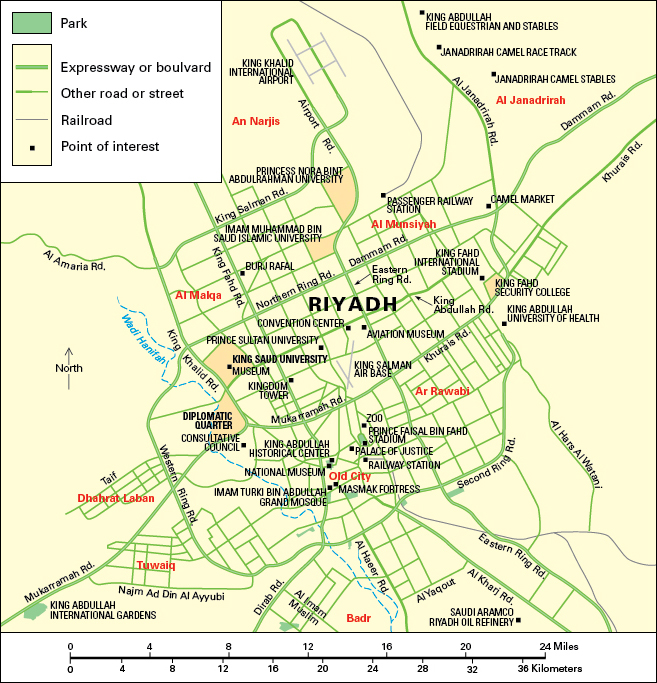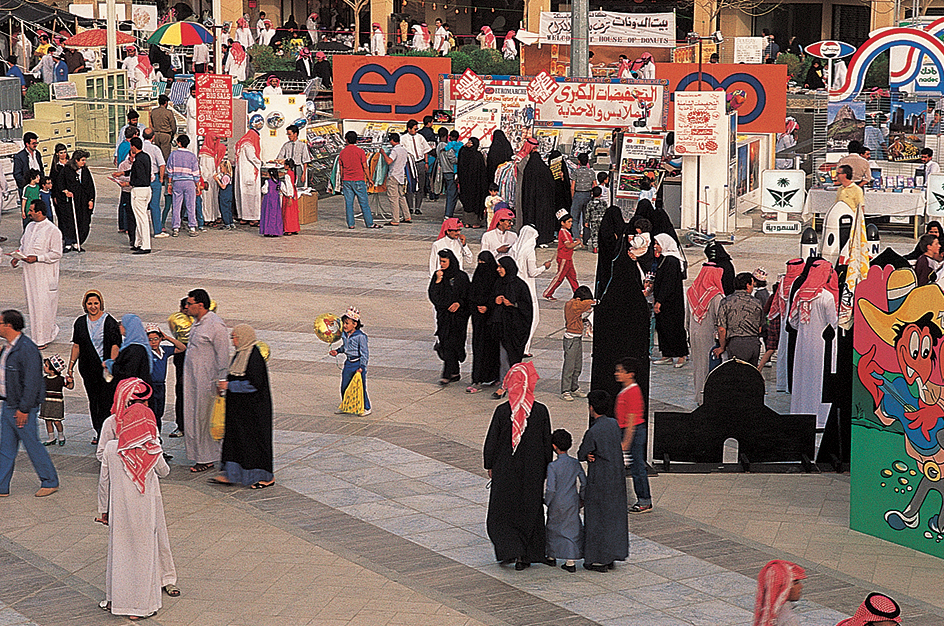Riyadh << ree YAHD >> (pop. 6,924,566) is the capital and largest city of Saudi Arabia. Riyadh lies among oases on a dry, rocky plateau near the center of the country. Riyadh is a business center and serves as the administrative headquarters of Saudi Arabia’s vast oil industry. The city is also the center of Wahhabism, a conservative form of Sunni Islam.

Since the mid-1970’s, when Saudi Arabia’s oil income increased dramatically, Riyadh has been one of the world’s fastest-growing cities. Hundreds of thousands of people have moved from rural areas of Saudi Arabia and from other countries to Riyadh in search of employment.

High-rise office buildings and large homes of concrete, steel, and marble have replaced nearly all of Riyadh’s old mud-brick buildings. Wide avenues and highways have taken the place of most narrow, unpaved streets. Many schools and hospitals have also been built in Riyadh. The Saudi government has laid a pipeline to help supply the city’s residents with water. The pipeline extends 290 miles (467 kilometers ) between Riyadh and Al Jubayl on the Persian Gulf coast. It delivers desalinated seawater—that is, seawater from which the salt has been removed. In the 1980’s, a huge embassy complex, called the Diplomatic Quarter, was built in Riyadh to accommodate diplomatic missions to Saudi Arabia. Previously, such missions had their embassies in Jiddah.
Riyadh has numerous public gardens, parks, children’s playgrounds, and a zoo. A covered stadium in the city hosts international sports events. The Riyadh Museum displays objects from the country’s past. King Saud University Museum in Riyadh exhibits items from the university’s archaeological excavations. The university itself is the largest one in Saudi Arabia.
The Saudi government, which controls the country’s oil industry, is Riyadh’s largest employer. Factories there produce aluminum, chemicals, china, paper, plastics, prefabricated houses, and many other products. A railroad links Riyadh to Ad Dammam on the Persian Gulf. King Khalid International Airport serves the city.
Riyadh became the center of Wahhabism after Egyptian forces destroyed the nearby town of Dariyah, capital of the Wahhabi empire, in 1818. The Saud family controlled Riyadh from 1824 to 1891, when they were expelled by a rival group. They retook the town in 1902. Riyadh then became the capital of the growing Saudi territory, which was recognized as the Kingdom of Saudi Arabia in 1932.
See also Saudi Arabia (History).
